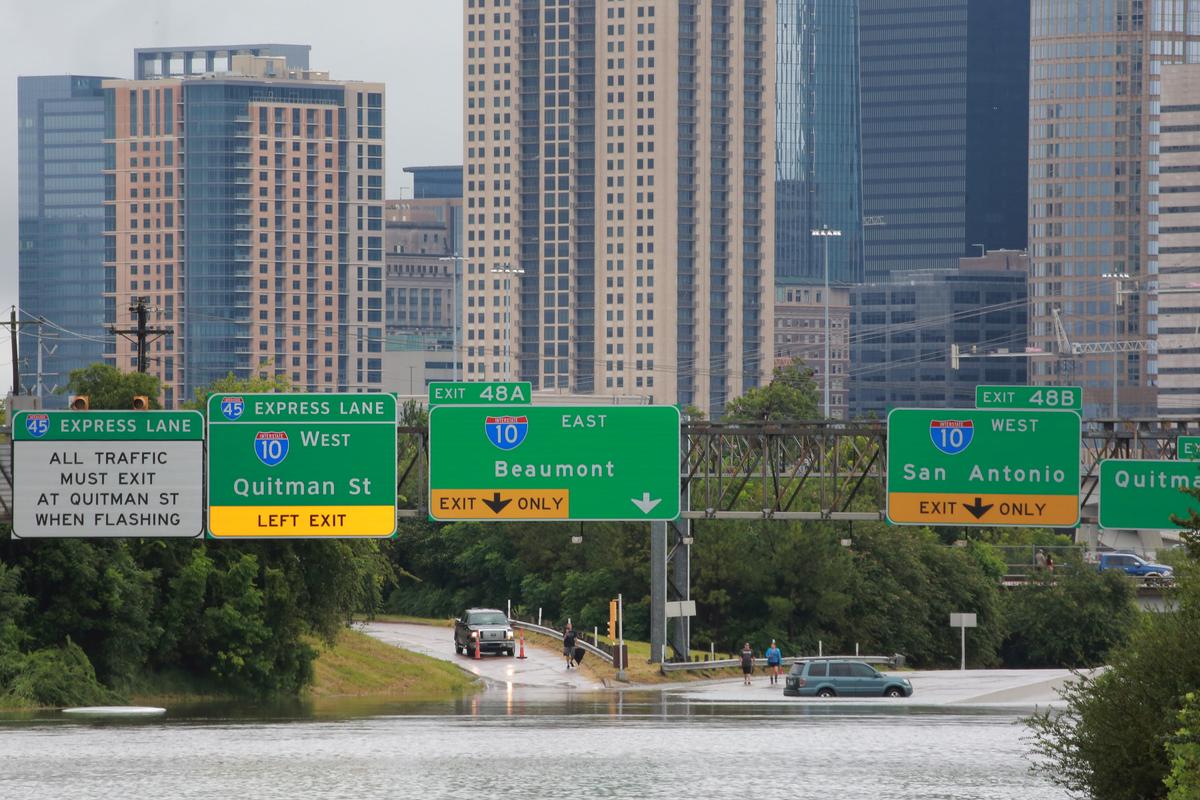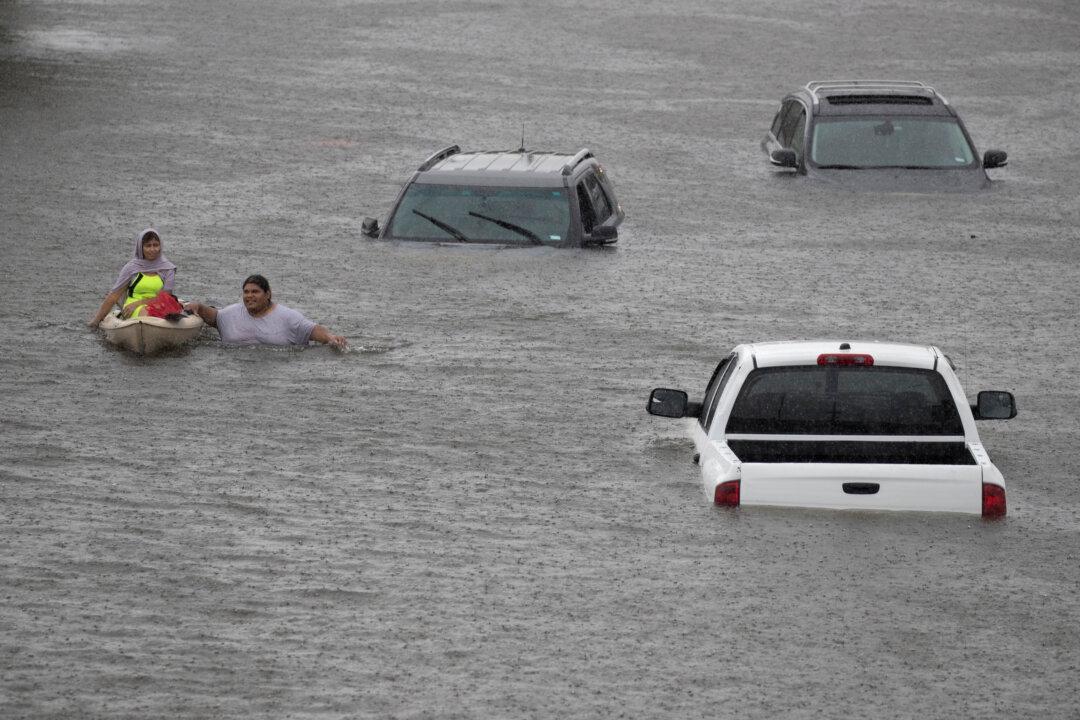HOUSTON—Tropical Storm Harvey was set to dump more rain on Houston on Monday, worsening flooding that has paralyzed the country’s fourth-largest city, forced thousands to flee surrounding counties and swelled rivers to levels not seen in centuries.
Harvey, the most powerful hurricane to hit Texas in more than 50 years, first hit land late on Friday and has killed at least two people. It has since stayed around Texas’ Gulf of Mexico Coast, where it is forecast to remain for several more days, drenching parts of the region with a year’s worth of rain in the span of a week.
Schools, airports and office buildings in Houston were ordered shut on Monday as scores of roads turned into rivers and chest-high water filled neighborhoods in the low-lying city that is home to about 2.3 million people.
Torrential rain also hit areas more than 150 miles (240 km) away, swelling rivers upstream and causing a surge that was heading toward the Houston area, where numerous bayous have already been breached.






